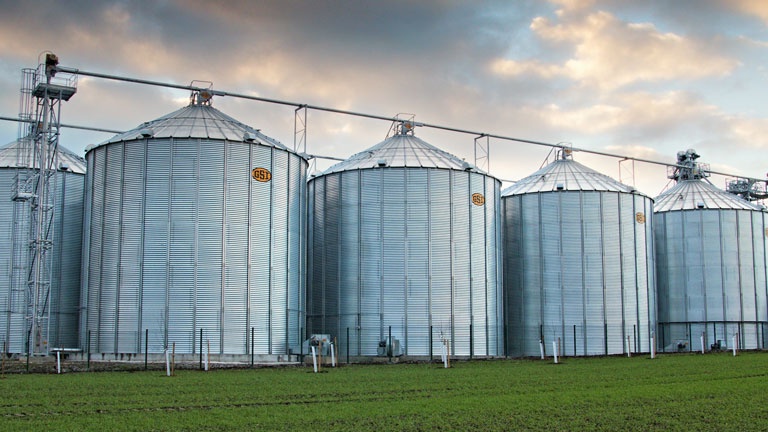In today's rapidly changing agricultural landscape, sustainable practices have become paramount for farmers and agribusinesses. One crucial aspect of sustainable agriculture is grain storage, which plays a vital role in preserving grain quality and reducing post-harvest losses. GSI grain bins have emerged as a leading solution in sustainable grain storage, offering numerous benefits that contribute to environmental conservation. This article explores how GSI grain bins promote sustainability, mitigate environmental impact, and foster a more sustainable future for the agricultural industry.
The Environmental Benefits of GSI Grain Bins:
-
Efficient Space Utilization: GSI grain bins are designed to maximize storage capacity while minimizing the footprint on agricultural land. By utilizing vertical space, farmers can store larger quantities of grain in a smaller area. This efficient use of land helps to preserve natural habitats and minimize deforestation, ensuring the protection of biodiversity.
-
Reduced Grain Losses: Grain spoilage and losses during storage can have a significant environmental impact. GSI grain bins offer advanced features such as temperature and moisture control systems, ventilation, and airtight seals that help maintain optimal storage conditions. By minimizing grain losses due to pests, mold, and moisture, GSI grain bins reduce the overall environmental footprint of agriculture and contribute to sustainable resource management.
-
Energy Efficiency: GSI grain bins incorporate energy-efficient technologies that reduce power consumption during the storage process. Insulated bin walls, efficient fans, and automated control systems help optimize energy usage, resulting in lower greenhouse gas emissions. By employing energy-efficient practices, GSI grain bins contribute to the reduction of carbon footprints associated with grain storage operations.
-
Integrated Pest Management: Traditional grain storage methods often rely on chemical pesticides to control pests, which can have adverse effects on the environment and human health. GSI grain bins integrate pest management techniques such as airtight seals, insect screens, and temperature control to create unfavorable conditions for pests. This reduces the reliance on harmful chemicals and promotes sustainable pest management practices.
-
Longevity and Durability: GSI grain bins are constructed using high-quality materials and innovative engineering techniques, ensuring their longevity and durability. This means that fewer resources are needed for repairs or replacements, resulting in less waste generation and reduced environmental impact. The extended lifespan of GSI grain bins contributes to sustainable resource utilization and conservation.
Conclusion:
As the agricultural industry continues to prioritize sustainable practices, grain storage plays a crucial role in reducing environmental impact and ensuring food security. GSI grain bins have emerged as a leading solution that promotes sustainability in grain storage operations. By efficiently utilizing space, reducing grain losses, incorporating energy-efficient technologies, implementing integrated pest management strategies, and offering longevity and durability, GSI grain bins contribute to environmental conservation.
The adoption of GSI grain bins not only benefits individual farmers and agribusinesses but also contributes to the overall sustainability of the agricultural sector. By reducing the environmental footprint associated with grain storage, these bins help mitigate climate change, conserve natural resources, and protect biodiversity.
As we look toward a more sustainable future, it is essential for farmers and stakeholders to recognize the role of grain storage in environmental conservation. Investing in GSI grain bins not only improves the efficiency and profitability of agricultural operations but also aligns with global sustainability goals. By embracing sustainable grain storage practices, we can create a more resilient and environmentally conscious agricultural industry that meets the challenges of the future while safeguarding the planet.


No comments yet